1. Wijdicks EF. The scope of neurology of critical illness. Handb Clin Neurol. 2017; 141:443–447. PMID:
28190429.

2. Diringer MN, Edwards DF. Admission to a neurologic/neurosurgical intensive care unit is associated with reduced mortality rate after intracerebral hemorrhage. Crit Care Med. 2001; 29:635–640. PMID:
11373434.

3. Josephson SA, Douglas VC, Lawton MT, English JD, Smith WS, Ko NU. Improvement in intensive care unit outcomes in patients with subarachnoid hemorrhage after initiation of neurointensivist co-management. J Neurosurg. 2010; 112:626–630. PMID:
19731990.

4. Samuels O, Webb A, Culler S, Martin K, Barrow D. Impact of a dedicated neurocritical care team in treating patients with aneurysmal subarachnoid hemorrhage. Neurocrit Care. 2011; 14:334–340. PMID:
21424884.

5. Suarez JI, Zaidat OO, Suri MF, Feen ES, Lynch G, Hickman J, et al. Length of stay and mortality in neurocritically ill patients: impact of a specialized neurocritical care team. Crit Care Med. 2004; 32:2311–2317. PMID:
15640647.

6. Varelas PN, Eastwood D, Yun HJ, Spanaki MV, Hacein Bey L, Kessaris C, et al. Impact of a neurointensivist on outcomes in patients with head trauma treated in a neurosciences intensive care unit. J Neurosurg. 2006; 104:713–719. PMID:
16703875.

7. Lim CM, Kwak SH, Suh GY, Koh Y. Critical care in Korea: present and future. J Korean Med Sci. 2015; 30:1540–1544. PMID:
26538995.

8. Marcolini EG, Seder DB, Bonomo JB, Bleck TP, Hemphill JC 3rd, Shutter L, et al. The present state of neurointensivist training in the United States: a comparison to other critical care training programs. Crit Care Med. 2018; 46:307–315. PMID:
29239885.
9. Song HK, Lee BI, Lee JH, Lee KS, Whang SH. Status of neurocritical care in Korea: a nationwide questionnaire survey. J Neurocrit Care. 2013; 6:82–86.
10. Varelas PN, Conti MM, Spanaki MV, Potts E, Bradford D, Sunstrom C, et al. The impact of a neurointensivist-led team on a semiclosed neurosciences intensive care unit. Crit Care Med. 2004; 32:2191–2198. PMID:
15640630.

11. Chowdhury D, Duggal AK. Intensive care unit models: do you want them to be open or closed? A critical review. Neurol India. 2017; 65:39–45. PMID:
28084236.
12. Watson GA, Alarcon LH. Intensivists: don't quit your day job⃛ yet! Crit Care. 2010; 14:305. PMID:
20377922.
13. Pronovost PJ, Angus DC, Dorman T, Robinson KA, Dremsizov TT, Young TL. Physician staffing patterns and clinical outcomes in critically ill patients: a systematic review. JAMA. 2002; 288:2151–2162. PMID:
12413375.
14. Van der Sluis FJ, Slagt C, Liebman B, Beute J, Mulder JW, Engel AF. The impact of open versus closed format ICU admission practices on the outcome of high risk surgical patients: a cohort analysis. BMC Surg. 2011; 11:18. PMID:
21861878.

15. American Thoracic Society. Infectious Diseases Society of America. Guidelines for the management of adults with hospital-acquired, ventilator-associated, and healthcare-associated pneumonia. Am J Respir Crit Care Med. 2005; 171:388–416. PMID:
15699079.
16. Knaus WA, Draper EA, Wagner DP, Zimmerman JE. APACHE II: a severity of disease classification system. Crit Care Med. 1985; 13:818–829. PMID:
3928249.
17. Jeong JH, Bang J, Jeong W, Yum K, Chang J, Hong JH, et al. A dedicated neurological intensive care unit offers improved outcomes for patients with brain and spine injuries. J Intensive Care Med. 2019; 34:104–108. PMID:
28460590.

18. Ryu JA, Yang JH, Chung CR, Suh GY, Hong SC. Impact of neurointensivist co-management on the clinical outcomes of patients admitted to a neurosurgical intensive care unit. J Korean Med Sci. 2017; 32:1024–1030. PMID:
28480662.

19. Jeon SB, Koh Y, Choi HA, Lee K. Critical care for patients with massive ischemic stroke. J Stroke. 2014; 16:146–160. PMID:
25328873.

20. See KC, Zhao MY, Nakataki E, Chittawatanarat K, Fang WF, Faruq MO, et al. Professional burnout among physicians and nurses in Asian intensive care units: a multinational survey. Intensive Care Med. 2018; 44:2079–2090. PMID:
30446797.

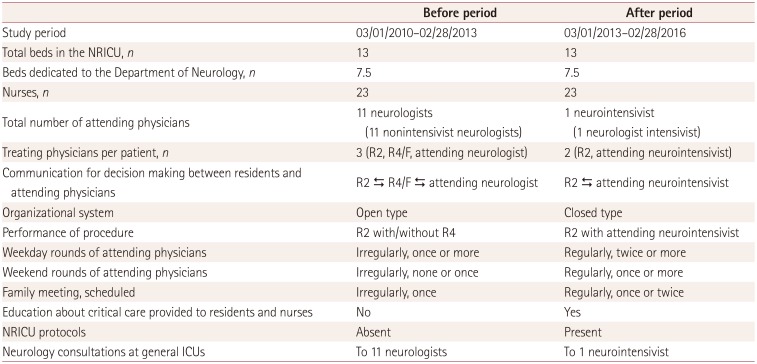
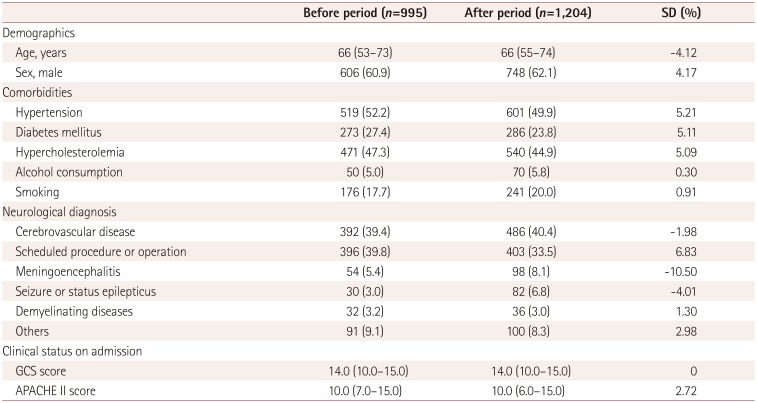
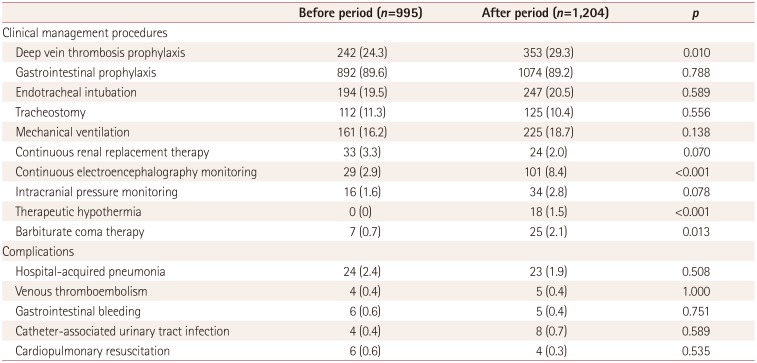
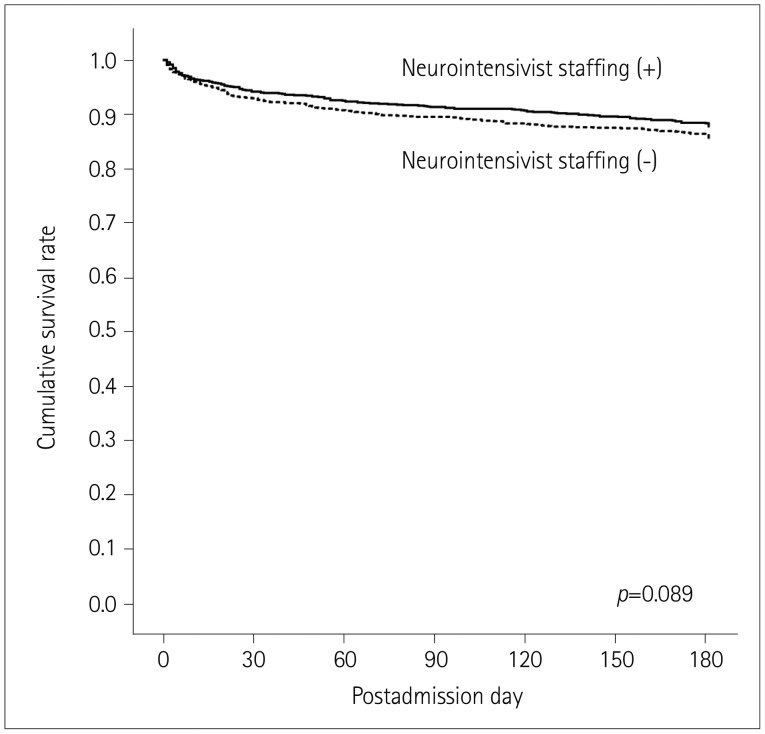

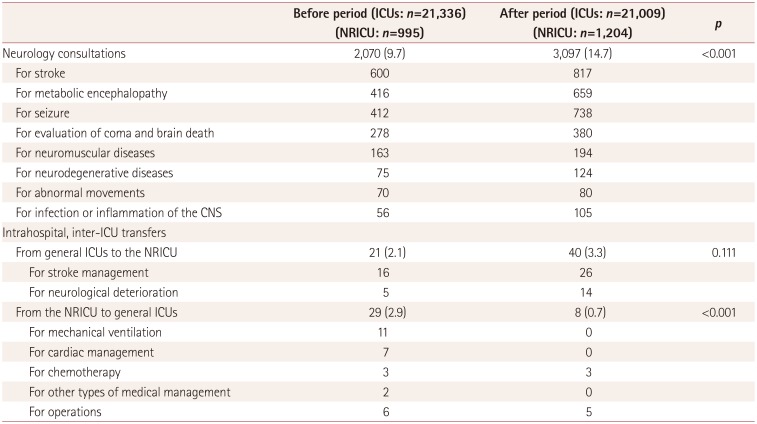





 PDF
PDF ePub
ePub Citation
Citation Print
Print


 XML Download
XML Download